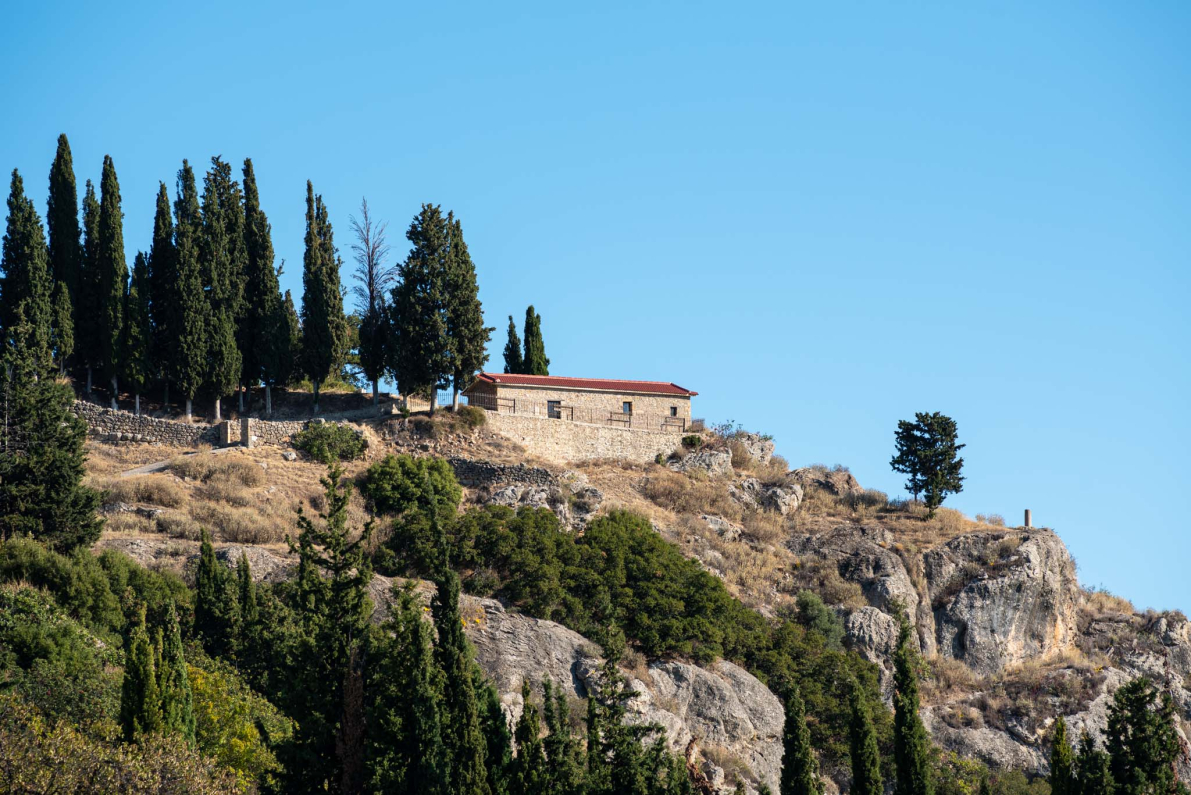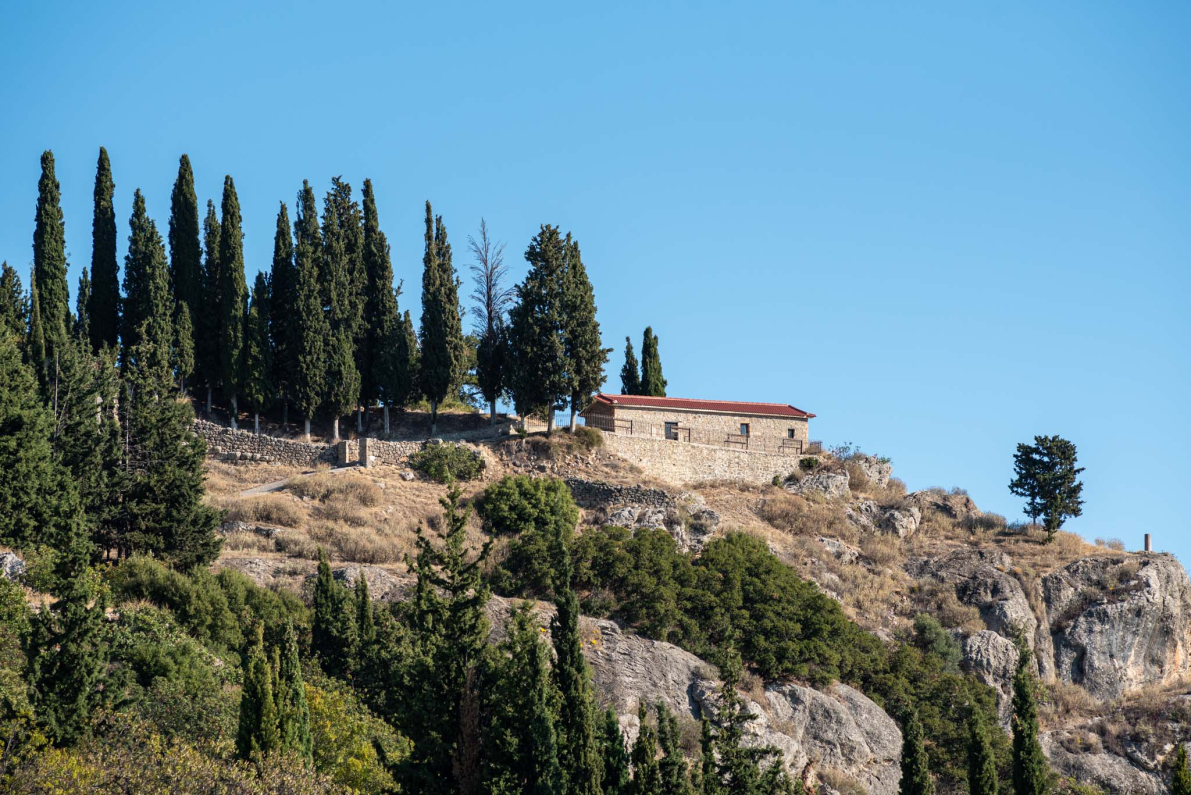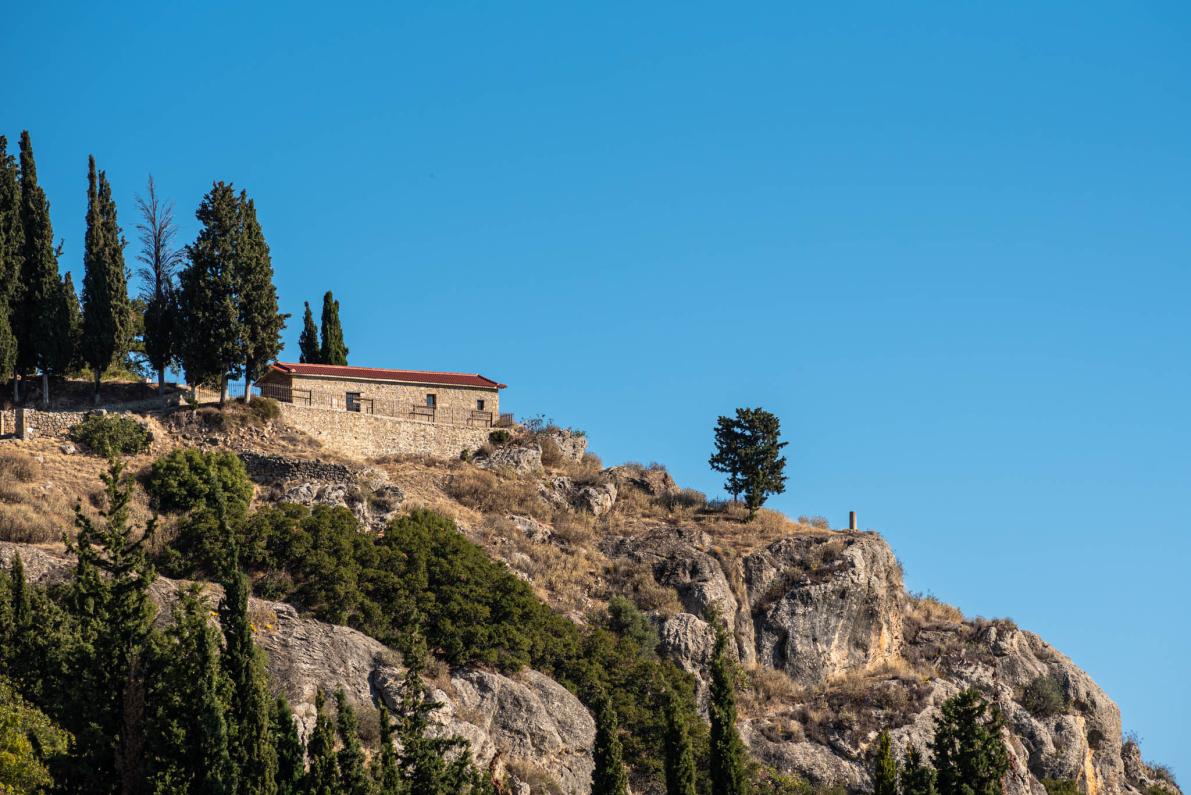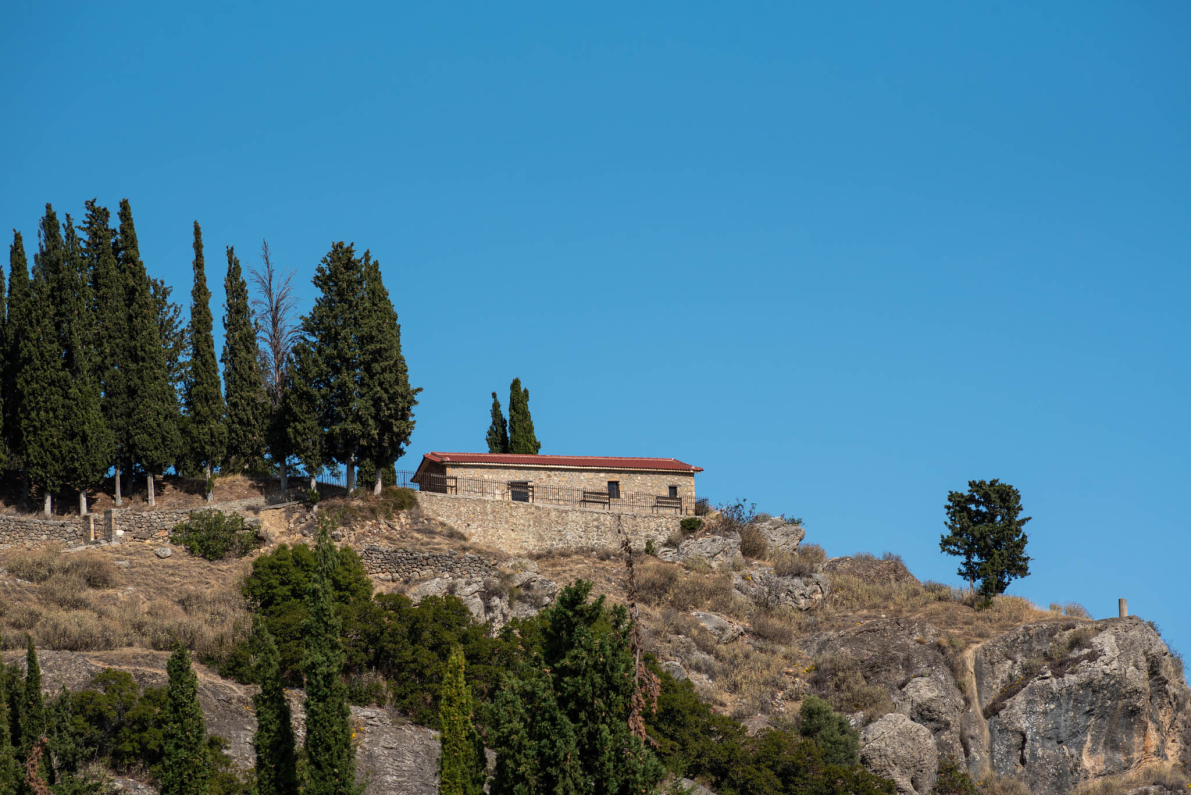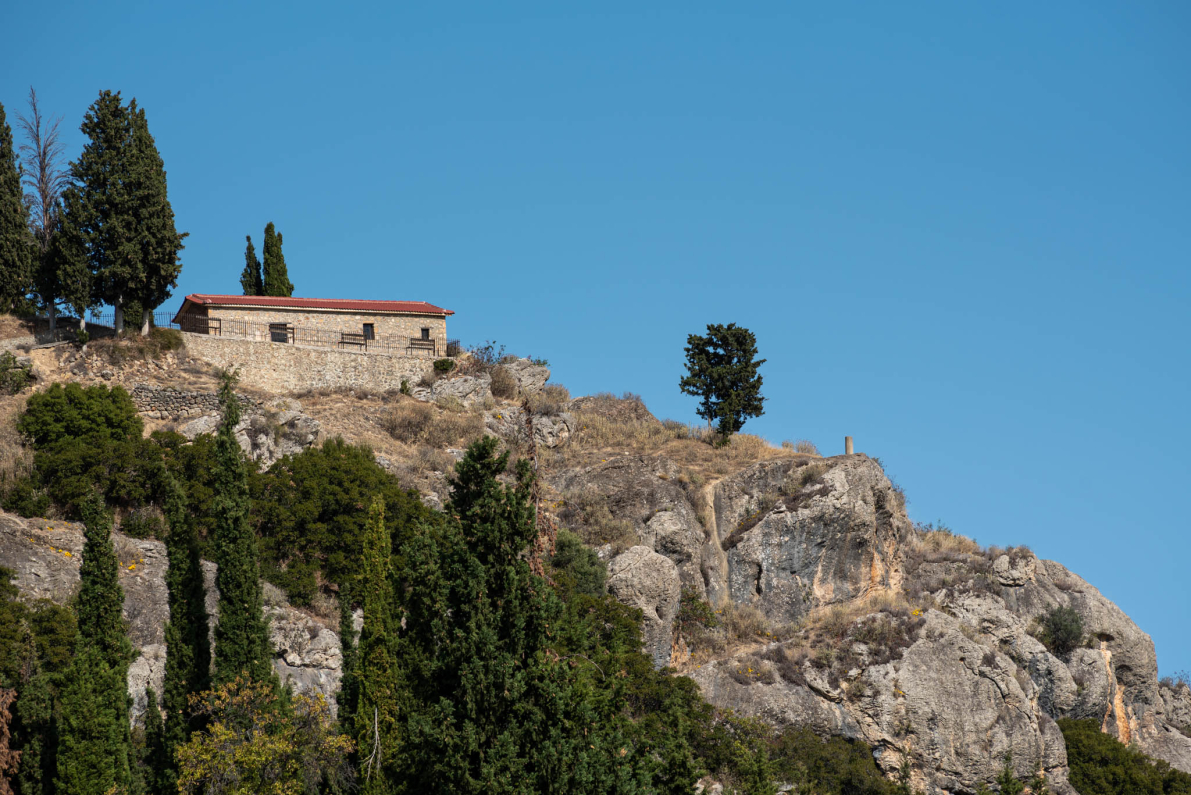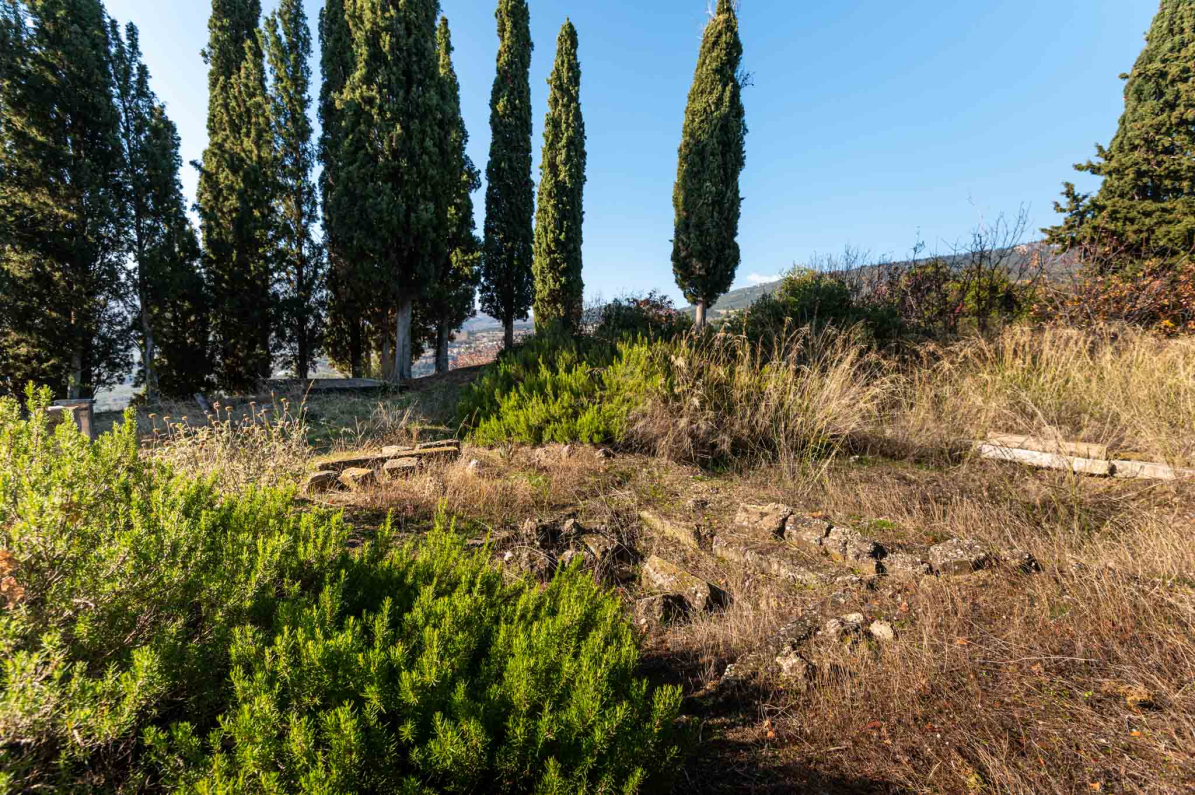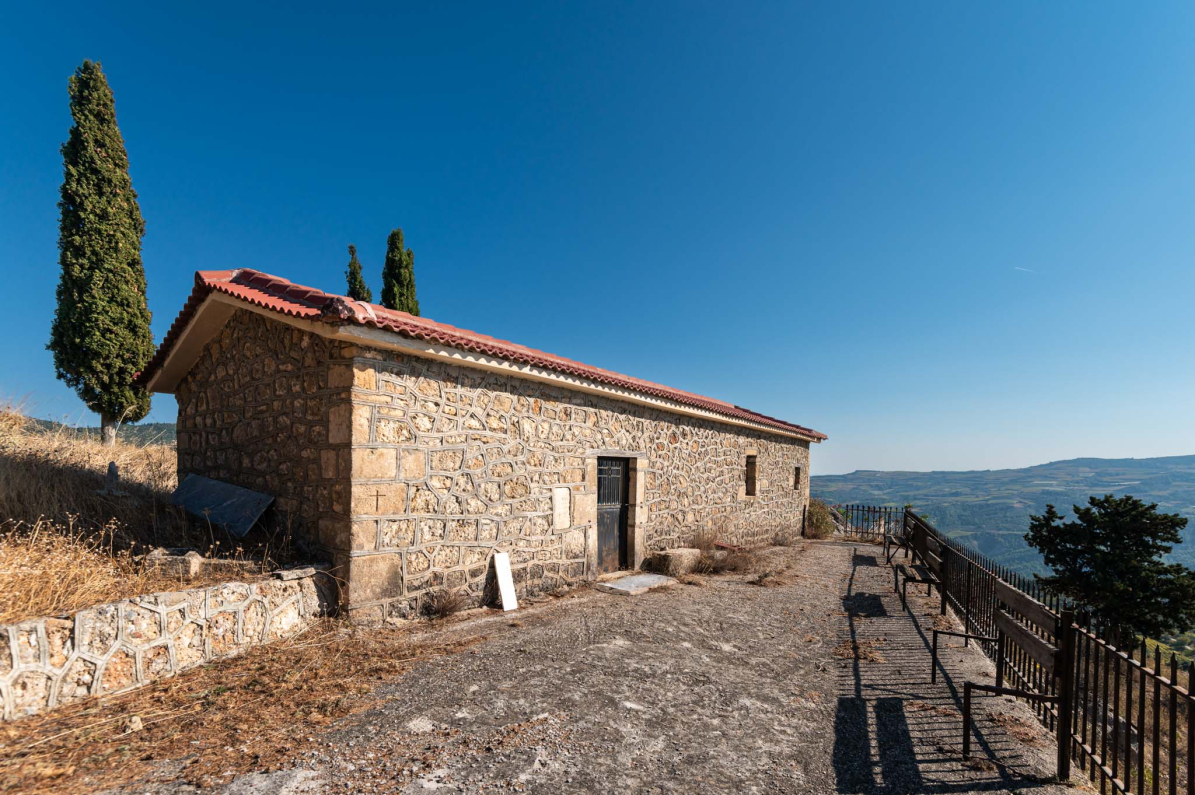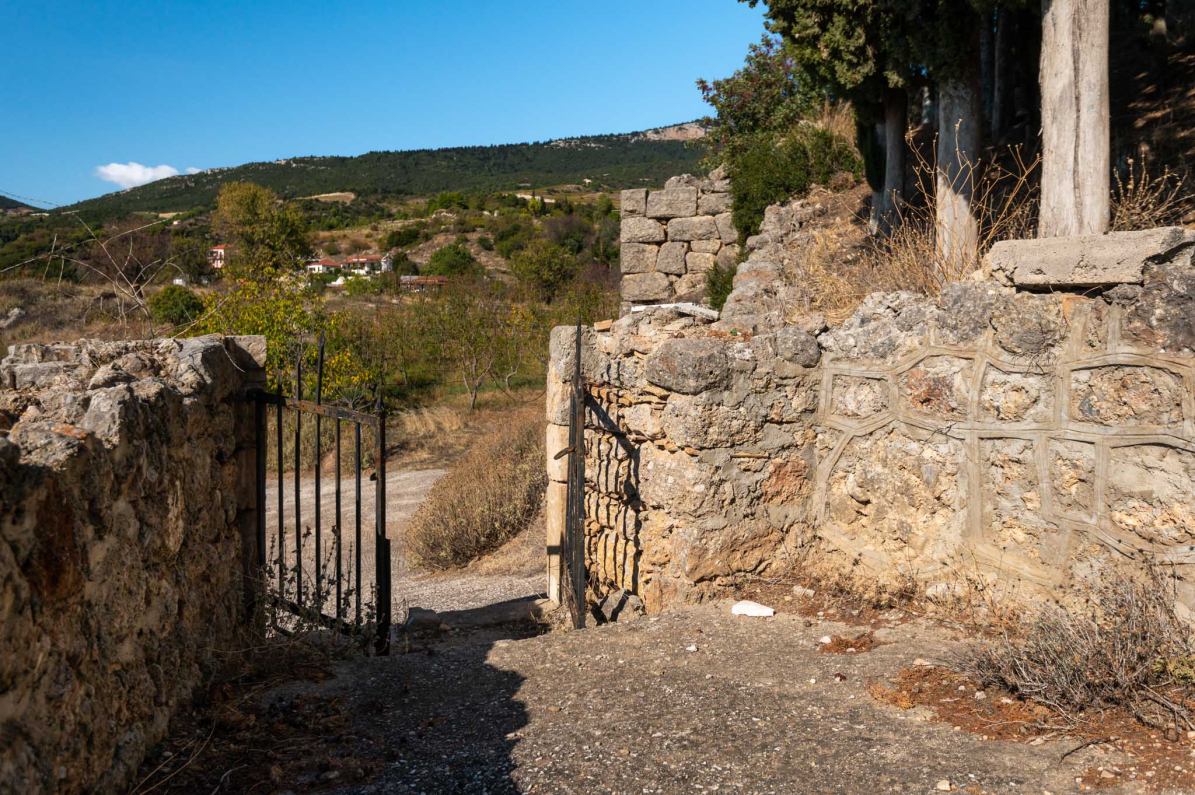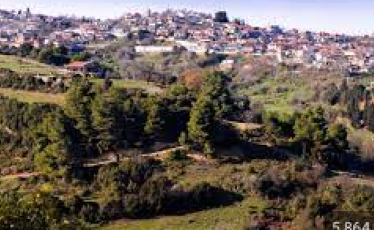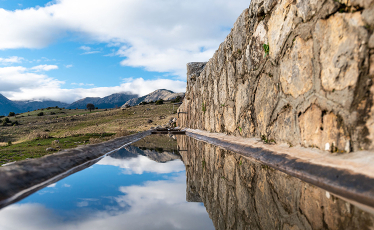At the foot of Mount Vesizas (ancient name Titan), 24 kilometers south of Ancient Sicyon, lies a unique archaeological site where myth intertwines inextricably with history. This is the Acropolis of Ancient Titanis, which, in antiquity, was part of the state of Sicyon and owes its name to the Titan, brother of the Sun. Ancient Titanis, whose acropolis still impresses today with its Cyclopean walls, was known as far back as the Mycenaean period.
During the Archaic period and later, it was known in the Greek world for its famous Asclepius sanctuary, which, according to myth, was founded by Alexanor, son of Machaon and grandson of Asclepius. According to the descriptions of Pausanias, who passed through the area in the 1st century AD, the city had a temple of Athena with two statues: one of Asclepius and one of Hygieia. Pausanias found the altar of the temple destroyed by lightning, but he saw the altar of the Wind, where every year ceremonies and exorcisms of Medea were held to calm the winds.
Today, the ancient city is partially excavated, and the ancient acropolis is visible and accessible, surrounded by an impressive Cyclopean stone wall. It is located at the northern entrance of the village (towards Gonoussa), on a small hill with cypress trees. Next to it, a cemetery church dedicated to Saint Tryphon has been built, which is believed to be located on the site of the ancient temple of Athena. Ancient architectural members and Greek inscriptions are embedded in the walls of the church. The view from Saint Tryphon towards the Asopus Valley is unique. Visitors who find themselves in the courtyard of the small church immediately realize why the Acropolis of Titanis remained an important geostrategic point until the late antiquity, continuously used by Greeks, Romans, Byzantines, and Venetians to control the area.
Admission:
Free. Prior coordination with the Ephorate of Antiquities of Corinth is required, as the area is fenced.

